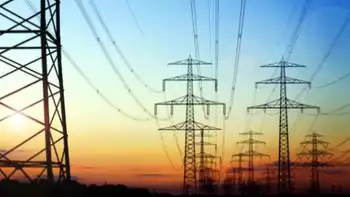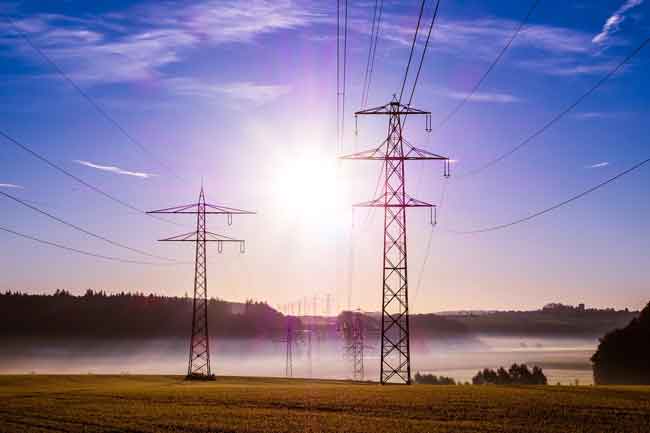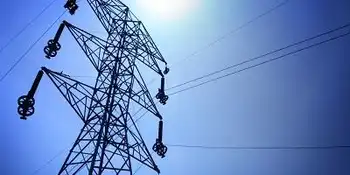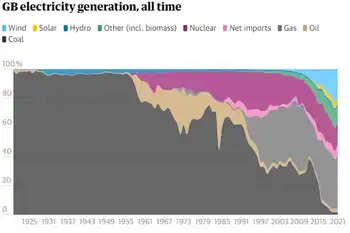Man converts gas pickup to run on batteries
By The Jackson Sun
Electrical Testing & Commissioning of Power Systems
Our customized live online or in‑person group training can be delivered to your staff at your location.

- Live Online
- 12 hours Instructor-led
- Group Training Available
Instead of filling up at the pump, he's charging up his 1993 Chevrolet S-10 to run on two dozen 6-volt golf cart batteries.
For two weeks, Lawrence has driven the truck he converted to electric power on Madison County roads. Each night, the truck is plugged into an outlet in his garage and the batteries are charged for eight hours. By the morning it's juiced up and ready to run between 60 and 80 miles that day.
The transformation of the ordinary blue truck was spurred, in part, by the challenge of building his own battery-powered vehicle. But Lawrence also was motivated by the desire to save money.
"You know what you spend a week on gas, and all of a sudden your money disappears," he said. Lawrence estimates he was spending $100 a week on gas before the conversion.
The truck drives and looks, well, like a truck, he said.
"It's not an interstate machine, but it cruises at 55 (miles per hour)," Lawrence said. "I don't have a bumper sticker or anything that says electric vehicle."
This summer, Lawrence and two of his sons, Daniel and Mark, spent two months converting the truck.
The 55-year-old mechanical engineer bought diagrams and a kit with the parts from New Hampshire company Electric Vehicles of America, which specializes in conversions with the Chevy S-10.
Lawrence said tackling a conversion requires some skills and a willingness to get dirty.
"It's pretty challenging," he said. "You need some welding skills, the ability to read wiring structure diagrams and a lot of patience."
The extensive project required an overhaul of much of the original parts that make the truck run.
"It was a lot of fun and a lot of work," Lawrence said. "By the time you finish it, you stare like, 'What do I do now?'"
They removed the clutch and pedal. They also removed the original wiring harness because the sensors for the internal combustion engine were not needed.
Under the hood, a board with a controller takes the 144 volts produced by the batteries and controls the new 9-inch-diameter electric motor.
They also installed a lift kit to allow easier access to the bank of batteries underneath the bed of the truck.
Total investment for the truck and conversion was $12,000. The batteries cost $150 apiece and should last for about 20,000 miles.
Lawrence said in the long run, he's saving money because it only costs about $1 a day to charge the batteries. He typically drives the truck about 40 miles a day.
Lawrence estimates the batteries add 800 pounds onto his 2-ton vehicle. Lightweight vehicles are needed to offset the additional weight of the batteries.
Lawrence's ingenuity also has led to him tackling plumbing, wiring and other issues at the family's home, said Darleen Lawrence, his wife of 28 years.
"There's not a whole lot he can't do," she said. "I never have to hire a handyman, so I never had any doubt that he could do this.
"It was a good family experience, but I didn't get involved at all," she joked.
As a teenager, Lawrence worked construction jobs doing welding.
"I used to tear stuff up all the time," he said. "I've just always been a tinkerer — if that's what you call it. Take this apart and put it back together."
One issue limiting the number of electric cars on the road is that driving long distances requires the more expensive lithium-ion batteries, Lawrence said.
Silicon Valley manufacturer Tesla Motors is producing 100 percent electric cars that will be able to travel 244 miles daily. The 2009 version is available for a base price of $109,000, according to the company's Web site.
Lawrence doesn't mind that he lacks some of the amenities that might be in higher-priced electric cars right now.
But one problem is the electric motor is not waterproof, so checking the weather report before taking the truck out is important.
"It doesn't like water," he said. "Before you get caught in a rain storm, you should leave it at home."
He plans to install heat and air-conditioning systems in his truck once their prices drop for hybrids and electrical cars. A new paint job is in the near future as well.
"I think it would be cool to get an antique truck like one from the '40s," he said about a possible future conversion.











